A visual history of eroticized genders in Thailand by Renee Owens
Month: December 2017

“When I say I always know I was a girl with such certainty, I erase all the nuances, the work, the process of self-discovery.”
“The fact that I admit to being uncertain doesn’t discount my women-hood. It adds value to it.”
Janet Mock in Redefining Realness
It is not my job to police children or anyone else on their path of self-discovery. One of my biggest takeaways in order to be an ally from WS382U fall term 2017.
Lou Sullivan
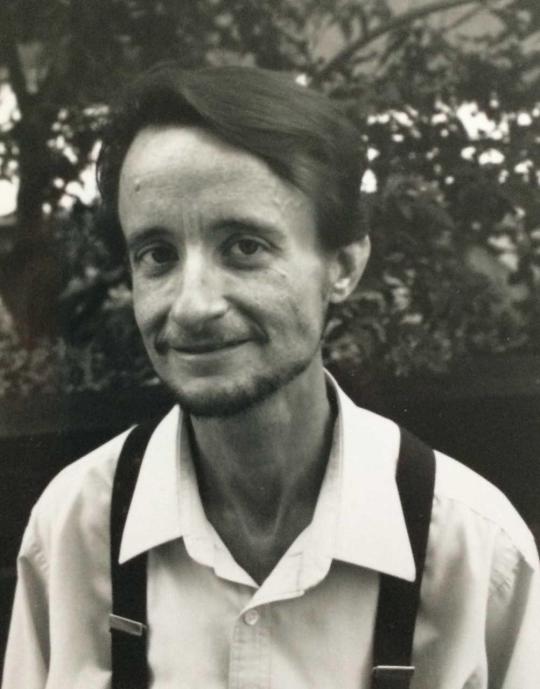
Lou Sullivan was a homosexual trans man who played a large part in the emergence of the transgender movement. Sullivan a key activist in transgender history, as well as an inspiration for people everywhere to be their true, authentic selves. Lou Sullivan was the hub of the organized FTM (female-to-male) community, in the United States during the 1980s. Sullivan was born in 1951, and kept a journal documenting his inner feelings and life experiences from the age of 10, until his death in 1991. In his journal entries he admitted in his childhood years, that he felt like a boy. He also discussed his confusing sexual fantasies in adolescence, in which he was a gay man. He also wrote about his participation in Milwaukee’s countercultural music scene as a teenager. Lou was a gay man, and advocated the importance of distinguishing gender identity from sexual preference. Many doctors told Lou he could either be a man, or attracted to men, but not both. Lou, however, knew this was not true.
The following are excerpts from Lou Sullivan’s journal entries from age eleven to age twenty-two.
“When we got home, we played boys.” – January 6, 1963. Age eleven
“My problem is that I can’t accept life for what it is, like it’s presented to me. I feel that there is something deep and wonderful underneath it that no one has found.”– December 12, 1965. Age fourteen
“No one looks deeper than the flesh.” – February 22, 1966. Age fourteen
“I want to look like what I am but don’t know what someone like me looks like. I mean, when people look at me I want them to think, there’s one of those people that has their own interpretation of happiness. That’s what I am.” June 6, 1966. Age fifteen
“My heart and soul is with the drag queens. This last week or so I’ve wanted to go and leave everything and join that world. But where do I fit in? I feel so deprived and sad and lost. What can become of a girl whose real desire and passion is with male homosexuals? That I want to be one? I still yearn for that world, that world I know nothing about, a serious, threatening, sad, ferocious stormy, lost world.” – November 22, 1970. Age nineteen.
”I know now that I can get exactly what I want – to fantasize is no longer enough. Before it was beyond my dreams. It was the worst perversion to wish I had a penis, to fuck a boy, to be on top and inside! But now it’s only a matter of time.”- December 11, 1973. Age twenty-two
After graduating high school, Sullivan began dressing in men’s clothes, and became active in the Gay People’s Union (GPU) Â at the University of Wisconsin. In 1973, Sullivan officially came out as a female transvestite, and declared he was attracted to bisexual and gay men. At this time, he was unaware of the identity ‘transgender’, so he did not identify as such, but found what he considered to be the closest label to his true self. This same year, Lou began his full-time career as a transgender activist. He published an article that appeared in GPU News in which he recalled conversations he had with a coworker who had problems with his crossdressing. Sullivan maintained that everyone presents themselves with certain recognizable gender conventions, and trans representations of feminine or masculine identities, are no more or less stereotypical than those of anyone else. The beliefs he held were important in the decades following his activism, and are still valued today in the transgender community.
In 1974, Sullivan published another article in GPU News, titled, “Looking Towards Transvestite Liberation”. His article was widely printed by gay and lesbian press, and is still a landmark article on the subject of FTM. In 1975, Lou officially identified as a female-to-male transsexual, and moved to San Francisco to have sex reassignment surgery. Sullivan continued to live as a woman for four years after he moved because he had gotten rejected and fired from multiple jobs due to his open, gay male identity. He tried to make peace with his female embodiment by becoming involved in feminist consciousness-raising sessions. He learned to repair cars, in order to challenge limiting female stereotypes (like women do not know how to drive or fix cars). He also became active in FTM cross-dresser groups in San Francisco, and developed peer support for female-to-male individuals.
One of Sullivan’s heroes and inspirations, was a trans man named Steve Dain, who had openly disclosed his gender identity at his job at school and was fired by a new principal. Fortunately, Dain was able to sue the school and receive some money for the hardships he was put through. Lou Sullivan met his hero in 1976 when he ran into a psychotherapist at a cross-dresser support organization who happened to know Dain. Dain helped Sullivan gain the confidence he needed to begin transitioning. In 1979, transgender medical services were shifting away from university-based research programs, and becoming more decentralized. Because of this, Sullivan was able to connect with medical specialists (psychotherapists, surgeons, endocrinologists) with private practices that were not judgmental in helping him transition.
In 1980 Sullivan was able to live his life, full-time as his true self, a gay man. He volunteered as the first FTM peer counselor at the Janus Information Facility. At the same time, Sullivan worked on becoming a community-based historian. Gathering his publishing’s in the GPU News from previous years, and information he gained from his work at the Janus Facility, he created an archive of transgender history. In 1986, he became a founding member and newsletter editor of the Gay and Lesbian Historical Society. Sullivan also published a biography in 1990 about a man named Jack B. Garland, who was a female to male trans man. His book asserted that Garland did not live life as a man to escape the discriminatory limitations of womanhood, but because being a gay man was his true identity, and a part of his authentic self. Lou Sullivan organized the first FTM-only support and education organization in the United States in 1986. This organization held monthly gatherings, educational programs, opportunities to socialize, and sent out newsletters. His organization eventually became FTM International, the largest FTM group in the world. It’s San Francisco chapter is dedicated to Sullivan, and named, “The Lou Sullivan Society.”
In 1981, the first visible manifestation of the AIDS pandemic negatively affected many people, but especially those in the transgender community. Trans people that participated in sex work for survival, those that shared needles with one another to inject hormones, and those that took part in the gay, male, sexual subcultures, were particularly at risk for contracting AIDS. Social stigma, poverty, and isolation are all reasons a trans person has poor access to health care services. Many transgender people are afraid to disclose their identity to their health care provider because it could potentially reexpose them to social vulnerabilities they have already worked to overcome. For these reasons, the transgender community (especially trans women of color) now has the highest rate of HIV infection in the entire world. On March 6, 1991, Sullivan died due to AIDS complications, surrounded by friends and family. In one of his final journal entries, Sullivan joked about writing to the staff of the gender dysphoria program to tell them, “You told me I couldn’t live as a gay man, but now I am going to die like one.”
Resistance and Body Joy: An Art Series
A Project by Eli Smith
The
normative body is an image that is fed to United States citizens through media,
culture, and the current context of society and who holds power within it. Often,
this body is illustrated as a white, cisgender, heterosexual, able, thin body –
a body standard that very few people can meet. When it comes to the transgender
body, there is an especially high instance of shame associated with the reveal
of this body in gendered spaces that expect cisgenderism. When the trans body can
be shown, it is often in the context of pornography, nonconsensual exposure, or
violence against transgender and gender nonconforming people. In the cis
imaginary, transgender bodies should be passing and invisible in order to be
deemed appropriate – but with the cost of hormones, surgery, and material goods
such as clothing and make-up, the reality of seeking a cis-passing body can be
nearly impossible. Additionally, not all transgender people feel the need to alter
their bodies to pass as cisgender.
Existing
in a trans body can often mean internalizing shame, trauma, and low self-worth
because of what types of bodies are valued in our society, which includes what
bodies are seen as desirable for intimacy. This becomes a question of how to
find joy in the transgender body, and especially in the transgender body that
isn’t cis-passing, heterosexual, white, thin, and able. In Eli Clare’s essay,
“Resisting Shame: Making Our Bodies Home,” he writes that “I want [transgender
people] to find places of resistance: places where our bodies, families, and
communities become home… let us pay attention to shame as an issue of health
and wellness, community and family. Let us create the space to make our bodies
home, filling our skin to its very edges” (458-465). Here, Clare is putting an
emphasis on the power of trans people and the allies of trans people to create
spaces of resistance – spaces where trans bodies can be loved, desired, and
celebrated outside of a hypersexualized, shameful, or violent context.
Resistance
comes in many forms, including art. What bodies are displayed in museums,
portraits, and magazines tell us what bodies should be celebrated. In response
to this, and to create a space for my own resistance as a gender nonconforming
femme boy, I have created a series of six pop-art pieces that showcase a
variety of transgender bodies. Beneath each image is a quote from a transgender
person about where (and how) they find joy in their identities as transgender
individuals.
These
pieces feature nude bodies in natural, relaxed poses. The hypersexualization of
these bodies is absent to make room for the celebration of nonconforming bodies
and the immense beauty that comes with them. I would like to reiterate that
these bodies are desirable, in and of the way that bodies are beautiful because
of their unique, diverse attributes and the home they provide to us. I hope
that, within a transgender studies archive, these pictures will reach trans
youth looking for images of bodies like theirs – and upon seeing them, know
that their body is valuable, beautiful and worthy of empowering, consensual
intimacy. “We are not the ones dysphoric about our genders,” Clare emphasizes
in his piece, and I would like to emphasize this too – “dysphoria lives in the
world’s response to us” (460). Within this project, I hope to turn that
dysphoric response on its head. I want transgender joy and body joy to become
an attainable reality, especially for those whose bodies least resemble the
norm our heteropatriarchal society tries to impose on us.
Clare, Eli. “Resisting Shame: Making Our Bodies Home.” Seattle Journal for Social Justice, vol. 8, no. 2, May 2010. D2L.
…
The quotes following each image are responses to a prompt asking where transgender and gender nonconforming people find joy in their identities.

“Being able to educate others.”
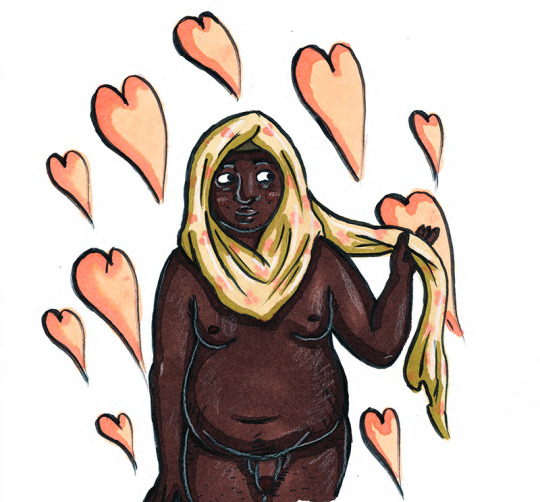
“Not being alone in the struggle.”
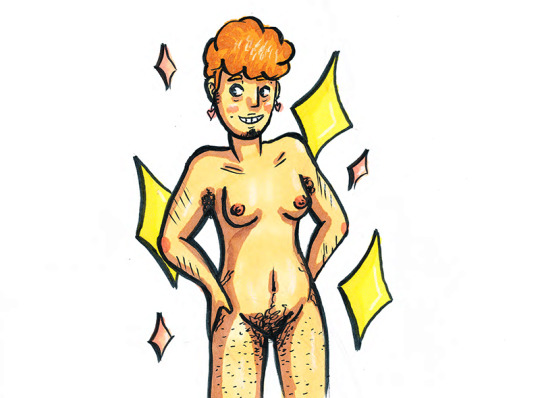
“I feel empowered by my trans identity.”
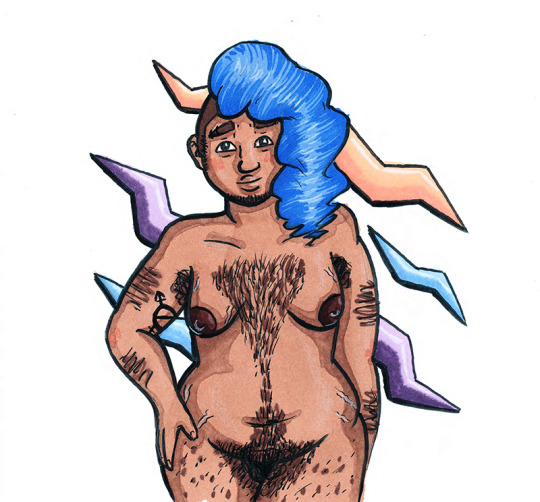
“The community and love.”
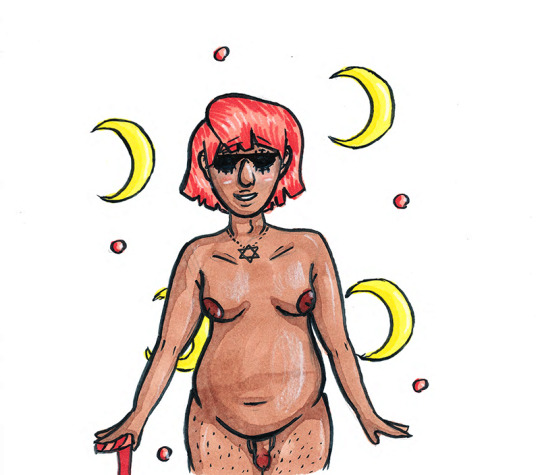
“Being trans has brought depth to my life. I see the world differently now.”
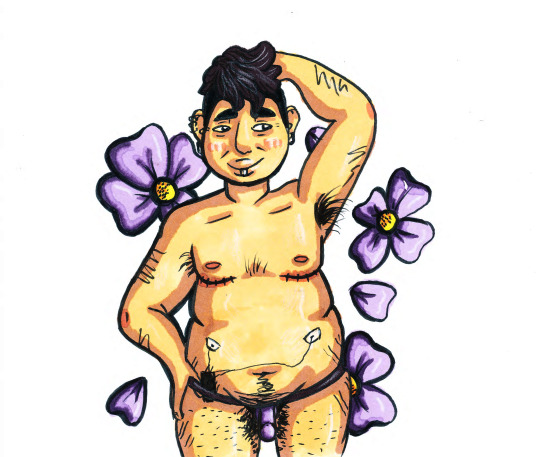
“Having to deal with less patriarchal nonsense in partnerships and friendships.”
Embers
How to be a Trans* Ally
By Elise Christian
This is by no means a complete list, this is merely my beginning at a simplified list of an incredibly complex topic
Do:
Be respectful even if you don’t get it
Listen to the people you’re allying!!
Check your privilege (this is so hard but the only way to be effective)
Ask questions if you’re confused
Ask people’s preferred pronouns in a respectful and share your own
Apologize if you make mistakes
Speak up when you hear other people being problematic
Take some of the burden off of trans people by correcting others
Involve yourself with the political: call your politicians,
Work with homeless shelters, jails, schools, police departments, etc. to improve conditions for trans folks
Use your cis identity to further the conversation about trans issues in ways trans folks can’t
Don’t:
Out a trans person! This can be dangerous for that person and it is disrespectful
Expect to understand all of it
Use other people as an encyclopedia
Forget you will make mistakes
Stop trying to learn!
Assume someone’s identity/ pronouns
Forget transitioning looks different for every person, don’t push!
Ask about someone’s body/ genitals
Be complacent in other people being transphobic
This information has been gathered from multiple sources including class discussions and the following sources:
“Supporting the Transgender People in Your Life: A Guide to Being a Good Ally.” National Center for Transgender Equality, 10 July 2016, transequality.org/issues/resources/supporting-the-transgender-people-in-your-life-a-guide-to-being-a-good-ally.
Thorpe, JR. “11 Ways To Be A Trans* Ally, According To Transgender People Themselves.” Bustle, Bustle, 1 May 2015, www.bustle.com/articles/76762-11-ways-to-be-a-trans-ally-according-to-transgender-people-themselves.
“Tips for Allies of Transgender People.” GLAAD, GLAAD, 14 July 2017, www.glaad.org/transgender/allies.
“University of Wisconsin-Milwaukee.” LGBT Resource Center, uwm.edu/lgbtrc/support/allies/trans-ally-tips/.
Gender Expression in Classical Art
by Sam Lovell
When researching trans history, most searches begin within the last half century. The study of trans history is a relatively new field with a very complex yet interesting synthesis of ideas and information. On the other hand, my personal field of art history goes back thousands of years and has had input for the lives of scholars throughout centuries and millennia. Trying to combine both of this vastly different fields can seem extremely daunting at first, but when looking closely small pockets of gender expression, identity, and portrayal begin to come to light and show us that trans history goes further into history than first realized.

In the earliest examples we can see a deep fascination of the hermaphroditic body, especially during the Greco-Roman era. The story of Hermaphroditus in Greek mythology was a popular one and a theme that was represented hundreds, if not thousands, of ways by the hands of many artists.

Hermaphroditus was seen as the completion of man and woman, a complete single being; one that transcended both sexes into something other-worldly. The Greek legend became known as a symbol for androgyny, frequently recurring in world class art pieces.

While beautiful and timeless, it is important to remember our current ideas of gender, sex, and identity did not exist during these times. Gender and sex were not separate ideas and rigid gender codes constricted a society whose only flashes of intersex identity came to the eyes of those deemed worthy enough to see it.
Moving into the 17th and 18th century, art became more prestigious, renowned, and changed. Ideas of what could and should be represented where in constant flux and differing regions had wars of style raging on. Expression of what was occurring around the chaos made way in the form of ‘femminiello’.

This term was used to describe homosexual men who presented a feminine gender expression. It is impossible today to discern whether these individuals were trans women or gay men, as these ideas converged into a sort of third gender. However, much like Hermaphroditus, these people were seen positively and even thought to bring good luck and fortune.
While it can be a sometimes tiring and difficult task, there are examples throughout art history of gender expression and play. The fact that there are multiple surviving works from even the earliest periods tells us that these images of differing gender were preserved throughout time because they were seen as important, interesting, or worthwhile. Each piece that survives is a deeper understanding of how sex and gender worked greater human history.
Transgender Hardcore Scene in the Present Political Climate
Malia Rodgers
Unfortunately I was unable to transfer videos to a format that would upload correctly for what I had compiled for my video archive idea. So I referred to another idea I had in mind! Highlighting some recent hardcore queer, trans-fronted bands.
This post focuses on only a few of the important trans-fronted punk bands within the sub-genre often referred to as “queercore”. Queercore, originating from the hardcore punk scene, began as a musical response to anti-lgbtqia+ sentiments in the mid-1980s.
Due to the genre stemming from punk, the themes of the music generally express discontent with systemic cissexim, homophobia, and racism, highlighting the anger within the community, offering a loud critique of society.
+HIRS+: Philadelphia, Pennsylvania. 2011-present.
Listen at: https://hirs.bandcamp.com/
(above is a music video for their song “The Sexxxy Flexxxi Theme Song”)
HIRS is composed of queer members, and fronted by a trans woman, but the band prefers to be referred to as a collective, focusing more on the project and message of their songs rather than the members of the band. Their prolific discography focuses on subjects such as protecting yourself from sexual assault in “How to Stop Street Harassment”, to feeling proud of your body despite societal expectations in “We are Gorgeous”.
The song “Say her name” highlights trans women who were killed at the start of 2015. The front-woman of the band told Noisey in an interview that “It’s about how it’s almost impossible to survive in any way as a trans person—especially trans women and especially trans women of color—regardless if we’re being killed in the street or we’re killing ourselves.”
The lyrics are as follows:
“This one’s for Amber and Ashley, for Ashton and Aubrey, for Cameron, Elisha, for Elul and Bri, for Jasmine, India, for Kandis and Keisha, Lamia, Keyshia, Kristina, K.C., for London, Mercedes, for Michelle, and Maya, for Papi and Penny and Rachel, Ryley, for Taja, Melonie, Tamara and Taylor, for Ty and for Zella, for Jess and for Shade. This one’s for us…”
In another song “We love all trans femmes and support you forever and ever” they tackle the subject of how the constant prejudice trans individuals face leads to death.
“it’s not about what if, it’s about when. how can we stay alive? we’re being murdered by our own parents. beat to death and suicide. we’re being offed everyday by our own hand when its not yours.”
Not all their songs encompass these serious and emotional topics however; the album “MAGICal/WANDerful” focuses on the pleasure one can receive from a personal massager.
G.L.O.S.S.: Olympia, Washington. 2014-2016
Listen at: https://girlslivingoutsidesocietysshit.bandcamp.com/
G.L.O.S.S., which stands for Girls Living Outside of Society’s Shit, was a trans-feminist punk band which gained recognition after they denied a 50,000 dollar record deal. The band did not wish to profit from the messages of their songs, stating that they could not “ethically partner” with a major label. The band’s two EPs were instead self-released. After gaining recognition however, the band made a decision to break-up, stating that “The punk we care about isn’t supposed to be about getting big or becoming famous, it’s supposed to be about challenging ourselves and each other to be better people. It feels hard to be honest and inward when we are constantly either put on a pedestal or torn down, worshipped or demonized. We want to be whole people, not one-dimensional cartoons.”
Despite their brief history as a band –and short discography- their lyrics, and the passionate delivery from trans front-woman Sadie Switchblade, prove very impactful and pertinent to the current political climate as it relates to transgender rights.
The title track on “Trans Day of Revenge” focuses on remembering those who have lost their lives due to cissexism. The lyrics are as follows:
PUT THROUGH HELL
TORN APART
CHICKS WITH DICKS KILL FROM THE HEART
UNTAMED WOMEN
SCARRED BY MEN
WE BREAK THE CYCLE WITH REVENGE
TRANS DAY OF REVENGE!
TRANS DAY OF REVENGE!
TRANS DAY OF REVENGE!
REMEMBER THOSE
DEAD AND GONE
BUT DON’T LET THE MEDIA SET US UP FOR HARM
HRC, SELFISH FUCKS
YUPPIE GAYS THREW US UNDER THE BUS
TRANS DAY OF REVENGE!
TRANS DAY OF REVENGE!
TRANS DAY OF REVENGE!
BLACK TRANS WOMEN
DRAPED IN WHITE SHEETS
BEATEN TO DEATH
HARASSED BY POLICE
HOMELESS ELDERS
WANDER THE STREETS
TRANS DAY OF REVENGE
NOT AS WEAK AS WE SEEM
“Masculine Artifice” from their demo focuses on the pathologization of transgender living as well as fighting systemic gender expectations. They speak of continuing to express their femininity despite being “trapped the lens of the cis-gaze”.
“MEDICALIZED/UNDER THE KNIFE/EXPECTED TO BE GRATEFUL/TRAPPED IN THE LENS/OF THE CIS-GAZE/JUST ANOTHER SAD TRANSEXUAL/MASCULINITY/WAS THEIR ARTIFICE/RIP IT AWAY/FEMININITY/ALWAYS THE HEART OF US!/TRANS GIRLS BE FREE!/I’M NOT PATHETIC/I’M NOT YOUR PROJECT/I WASN’T PUT HERE FOR YOU/SAME BULLSHIT STORY/ABOUT MY BODY/MEDIA DOESN’T HAVE A CLUE/MASCULINITY/WAS THE ARTIFICE/RIP IT AWAY/FEMININITY/ALWAYS THE HEART OF US!/TRANS GIRLS BE FREE/GET OFF MY BACK!/AHHGHHH”
The queercore scene not only included music, but a mass of zines as well. Here is the link to the online archive (an archive within this archive) which i recommend checking out to view queer-focused zines from 1974-present.

When I started writing this poem I initially wrote out phrases or short lines that I personally felt reflected my experience of being non-binary and knew I would be able to link them with what I had learned in class. I approached it with the theme of infancy and gendered colors because at birth we don’t have a choice in the way the world labels us. Gender is the primary detail focused on when we first come into the world, and the way that this is expressed is through pink and blue blankets and clothing. “Pink was the path to normality” because pink is everything feminine and behaving as your society expects you to is to be normal. This stanza as well as the third, contain references to the modes of power that Dean Spade presents in Normal Life.
The fourth and fifth stanzas are in reference to trans temporality and the popular notion that to be trans is to be binary—that you must either identify as male or female and that all trans people seek physical transition. I end it with that question because of the way that institutions hold the power to deny us the rights to change our names and our bodies. I bolded the title with the first word of the poem to make a connection without directly including it in the first stanza. I also feel that the arrangement of the stanzas accurately express my feelings of uncertainty throughout my struggle. It portrays being caught between trying to exist in this world and trying to be myself.
#NBNovember
By Elijah Wennstrom
On November 6th, 2017, agender comic artist and colorist Ray Nadine started the hashtag NBNovember on Twitter. It was created in direct response to the treatment of nonbinary artists during the duration of the Visible Women hashtag in March, which was about finding and boosting the voices of women in the comics industry. Later in the tag’s life, a sort of asterisk was added on as #VisibleNB. The idea was then to boost the voices of anyone in the comic industry who was not a man.
A lot of nonbinary creators were grateful for the additional tag, but it did not sit well with others. The implications of nonbinary folks being “basically women” or “women plus” caused discomfort, and some found it also contributed to the idea that only DFAB individuals can be nonbinary. What follows is screencapped images of Nadine’s original tweets, as well as a transcription.


[Transcription: Ok, so I’m gonna try to start a thing, I’ve been thinking about it since #VisibleWomen a while back
I voiced my opinions back then on irt a #VisibleNB tag being made on the same day as #VisibleWomen, but I’ll say it again #NBNovember
I don’t want to be conflated with #VisibleWomen as an agender person. #NBNovember
I want my own space & visibility, & don’t want to speak over women either. #NBNovember
I get the intent of #VisibleNB obviously – #NBNovember
But being on the same day as #VisibleWomen just reinforces a sentiment of “this is for AFAB ppl only” #NBNovember
& 1. #NBNovember is for any NB person. 2. I don’t want my agender-ness to be associated w me being AFAB. Just don’t
Plus, it was confusing for NB ppl who did use the #VisibleWomen tag for a #VisibleNB tag to crop up hours later. #NBNovember
NB ppl deserve visibility too, & not visibility that triggers dysphoria tbh #NBNovember
Just as women deserve their own space for visibility too. #NBNovember
Anyway, I’m gonna be RT’ing creators using the #NBnovember tag, pls join in too!
End transcription]
What came after was close to a solid month of nonbinary artists and creators being able to share and lift up the work of themselves and others in their own space.
Under the read more break, I’m going to post a (incomplete) collection of the artists that posted in the tag. Each will include their name, pronouns and/or self descriptions (if given), what kind of work they do, and where to find it. Twitter’s format is such that things are buried quickly and easily, and I believe it would be worthwhile to separately link as many of the creators as possible.
Reena, (they/them), visual artist – Twitter, Tumblr
Natee Puttapipat, non-binary (they/them), illustrator – Twitter, WordPress
[Name not given], disbled trans immigrant (they/he), wig maker, illustrator, makeup artist – Twitter, Instagram
Tori, (they/them), illustrator, animation grad – Twitter, Tumblr
Quinn Spence, enby (they/them), 3D/2D artist – Twitter, Portfolio site
Ash, lesbian person (they/them), visual artist – Twitter, Tumblr (art tag)
Nova, fine arts latinx student (pronouns not specified), visual artist – Twitter, Tumblr, Ko-fi, Portfolio
Carrie, (pronouns not specified), doodler – Twitter, Tumblr, Ko-fi
Xzoni, (any pronouns), visual artist – Twitter
J Workman, enby (they/them), graphic designer, illustrator, motion designer – Twitter, Etsy, Instagram
Shan Murphy, (pronouns not specified), comic artist, illustrator – Twitter, Instagram, Portfolio, Ko-fi, Patreon
Sheb, nonbinary (they/them), comic artist – Twitter, Comic, Comic Patreon
Ame, blind agender enby (they/them), illustrator – Twitter, Site,
Chai, queer (they/them), comic artist, illustrator – Twitter, Patreon
Kiernan Sjursen-Lien, (they/them), writer, animator, comic artist – Twitter, Tumblr
Dirk, (he/they), comic artist, portrait artist – Twitter, Comic Site
Joiku, (they/them), character design, visual artist – Twitter, Tumblr
Charlie, (they/them), animator, illustrator – Twitter, Ko-fi
Brigitte Woltjen, (pronouns not specified), story board artist/revisionist – Twitter, Site
Ty, (pronouns not specified) visual artist – Twitter, Tumblr
Ana Mardoll, (Xie/She/He), writer – Twitter, Site
Sam Wilson, nonbinary (they/them), writer, artist, game dev – Twitter, Site
Dee S. (she/they), cartoonist – Twitter, Site
Addy, NB (they/them), writer, cosplayer – Twitter
Dani, (they/them), visual artist – Twitter, Tumblr
Dax, (fey/fem), software engineer, writer – Twitter, Site, Books link
Julian K Jarboe, (they/them), writer, sound designer – Twitter, CuriousCat
Rae White, genderqueer (they/them), writer – Twitter, Patreon
Tiff, demigirl (they/she), musician, writer, game dev – Twitter, Patreon
Milly, (they/she) visual artist – Twitter
Mia Siegert, (pronouns not specified), writer – Twitter, Site
Aleksi, (he/they), illustrator, graphic designer – Twitter, Tumblr, Ko-fi
Z, (they/he) visual artist, fiber artist – Twitter
PD, Non-Binary (they/them), visual artist – Twitter
[Neven?], (il/they), visual artist – Twitter
Hamisti, Brazilian genderfluid person (pronouns not specified), visual artist – Twitter, Tumblr
Qynce, transmasc NB (they/them) comic artist – Twitter, Patreon
Hallopino, gender-fluid (pronouns not specified), writer, visual artist – Twitter, Site
Wallis, genderfluid NB (she/her) comic artist – Twitter, Comic site
Reen/Ren, nb Lao american (pronouns not specified), visual artist – Twitter
Leãozinho, non binary Brazilian (pronouns not specified), visual artist – Twitter
Chy, (pronouns not specified), photographer, visual artist – Twitter
MVF, (she/her), cartoonist – Twitter, Ko-Fi, Weebly
Danny, (pronouns not specified), visual artist – Twitter, Tumblr
Max, nonbinary (they/them), visual artist – Twitter
Tara, (pronouns not specified), visual artist – Twitter
Kendra/ABC, (they/them), visual artist – Twitter, Tumblr
Em, autistic demiboy (pronouns not specified), visual artist – Twitter
Gum, nb (any pronouns but she/her preferred), visual artist – Twitter
Caro, NB (she/he/they), visual artist – Twitter
Cody, (they/he), visual artist – Twitter
Cal, korean nb (they/them), illustrator – Twitter, Tictail
[Name not given], (they/them), cosplayer, visual artist, seamstrex – Twitter
Mattie, nonbinary (they/them), studio art student, animator, 3D modeler – Twitter, Tumblr
Kyle, queer (they/them), feelance illustrator, comic artist – Twitter, Site
Miranda, NB (pronouns not specified), visual artist – Twitter,
Sein, enby (they/them), visual artist – Twitter, Tumblr
Itzel/Gaby, gender fluid latinx (pronouns not specified), graphic designer, illustrator, cosplayer – Twitter, Facebook
M, chinese american (she/they), illustrator, concept artist – Twitter, Tumblr
Sage, genderqueer (they/them), visual artist – Twitter, Weebly
Ash Ezra, (they/them), visual artist – Twitter, Ko-fi
Felix A. Rachelle, queer, disabled, nb (they/them), comic artist, illustrator – Twitter, Site
Bonn/Percy, trans (they/them), fine arts student – Twitter, Tumblr
Perci, queer (they/he), visual artist – Twitter, Patreon, Ko-fi
Lu, (they/them), visual artist – Twitter, Tumblr
Lia, (they/them), visual artist – Twitter, Redbubble
Alexa, nb (pronouns not specified), animator, story artist – Twitter, Site
Len, brazilian, gay (they/them), visual artist – Twitter, Tumblr
Manda, lesbian (they/them), visal artist – Twitter
Moura, queer (pronouns not specified), visual artist – Twitter
J, sapphic enby (they/them), visual artist – Twitter, Tumblr
Casey/Bernard, (it/its), visal artist – Twitter, Instagram, Tumblr
LB, (pronouns not specified), writer, visual artist – Twitter, Linktree
Cookie, nb (they/them), illustrator – Twitter
Vin, fluid nb-demiguy (he/they) cartoonist, cosplayer – Twitter, Tumblr
Scribe, nonbinary (pronouns not specified) writer – Twitter, Tumblr
Dup/Kobuddy, (they/them), streamer – Twitter, Youtube
Atlas/Isaac, neutrois (pronouns not specified) visual artist – Twitter
Lany, (pronouns not specified), visual artist – Twitter, Tumblr
Kale, (they/she), visual artist – Twitter, Tumblr
Sam, demi/nb peurto rican (she/her or any pronouns), visual artist – Twitter, Storenvy
Mychal, black queer (they, she/he on occasion but ask first), writer – Twitter
Myrseyy, non binary (they/them), comic artist – Twitter, Comic site
Amore/Syph, nb (pronouns not specified) visual artist – Twitter
Holly McGillis, (they/them), writer, illustrator – Twitter, Site
Hailey, (pronouns not specified), visual artist – Twitter, Ko-fi
Elijah, demiboy (he/they), comic artist, illustrator – Twitter, Instagram, Tumblr
[Name not given], queer (they/them), DJ, musician – Twitter, Soundcloud
Eric, (she/they), illustrator – Twitter, Ko-fi
Gibby, nonbinary (she/they) freelance artist – Twitter, Weebly, Tumblr
John, nb (pronouns not specified), visual artist – Twitter, Tumblr [warning for flashing images through tumblr link]
C, enby (pronouns not specified), visual artist – Twitter, Instagram, Tumblr
Mik, (they/them), visual artist – Twitter, Ko-fi
Gum, agender (pronouns not specified), visual artist – Twitter, Carrd
Void, (they/them), visual artist – Twitter, Tumblr
Alwyn, genderfluid lesbian (they/them), visual artist – Twitter
Skye, (pronouns not specified), visual artist – Twitter
Sheila, (they/them), comic artist – Twitter, Comic Tumblr
Rae, queer (pronouns not specified) visual artist – Twitter
Sal, agender (they/them) cartoonist – Twitter
Jo-Robo, desi/goan, queer (they/them) visual artist, game dev – Twitter, Dev Tumblr, Itch.io
Warden, nonbinary masc (he/him) writer, game dev – Twitter, Itch.io, Site
Dani, mexican canadian (any pronouns) cartoonist – Twitter, Carrd
Vi, non-binary (they/them), painter – Twitter, Ko-fi
Meghan, (pronouns not specified), illustrator – Twitter, Tumblr
Christian Dobbins, NB (he/him), animator – Twitter, Site
Bri Wood, biracial (pronouns not specified) writer – Twitter, Site
G, nonbinary (they/them) comic artist – Twitter, Comic site, Patreon
Pookie, nb lesbian (they/them), writer, visual artist – Twitter
Alex, nonbinary trans guy (pronouns not specified), visual artist – Twitter
Sol, agender (pronouns not specified), visual artist – Twitter, Carrd
Tegan, androgynous (he/she/they) visual artist – Twitter, Listography
Mia, queer Nicaraguan American (they/them), animator, illustrator – Twitter, Ko-fi, Portfolio
Brendon, genderfluid transmasc (he/they), illustrator – Twitter, Ko-fi
Peach, autistic (they/them), visual artist – Twitter, Carrd
Vi, (they/them), visual artist – Twitter, Tumblr
[Name not given], agender (they/them) visual artist – Twitter, Deviantart
Stevie, nb lesbian (they/them), visual artist – Twitter
Rel, nonbinary (they/them) comic artist – Twitter, Ko-fi
Reymo, genderless (it/its), illustrator – Twitter, Carrd
Sproo, NB Korean (pronouns not specified), comic artist, illustrator – Twitter, Tumblr
Murphy, queer epileptic (pronouns not specified), writer, video colorist – Twitter, Site
Sara Duvall, latinix (they/them), comic artist, illustrator – Twitter, Site
Speedo, nb (pronouns not specified), visual artist – Twitter
Ame, (they/them), visual artist – Twitter, Tumblr
Kat, Estonian (they/them) – Twitter, Site
Ophelia, canadian, disabled, non-binary femme (pronouns not specified), stamp artist – Twitter, Ko-fi, Paypal
Erik/Piney, (he/they), illustrator – Twitter, Listography
Kat, queer nb (they/them) poet – Twitter
Linky, agender (they/them), illustrator – Twitter, Instagram
Rae, enby (they/them), illustrator – Twitter, Ko-fi
Ark Revner, queer (pronouns not specified) illustrator, sequential artist – Twitter, Instagram
Gag, (they/them), visual artist – Twitter
Pierce, trigender (any pronouns), jewler, visual artist – Twitter, Tumblr
Mira, Finnish, non-binary (they/them), printmaker, visual artist – Twitter
Kali, Bahamian, nonbinary (pronouns not specified), illustrator – Twitter
Rosemary, agender (they/them), visual artist – Twitter, Tumblr
Chie, (she/they), comic artist, musician – Twitter, Store, Comic site
Ciel, NB (pronouns not specified), illustrator – Twitter, Ko-fi, Patreon
Bennett, (they/them), illustrator – Twitter
Kor, (pronouns not specified), 3D artist/animator – Twitter, Tumblr
Rob, (he/him), writer, editor – Twitter, Comic site
Kass (they/them), comic artist, illustrator – Twitter, Comic site, Listography
Arlyis (pronouns not specified) animator – Twitter, Redbubble
Reese, (they/he), visual artist – Twitter
Jessica, (any pronouns), visual artist – Twitter, Instagram
Crabs, agender (they/them) visual artist – Twitter
Hayden, nonbinary (pronouns not specified), visual artist – Twitter
Ollie, nb transfemme (they/she/he), visual artist – Twitter
Dey, black, (pronouns not specified), visual artist – Twitter
Namorado, queer (they/them), illustrator – Twitter, Tumblr, Instagram





